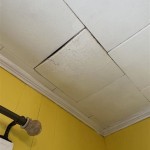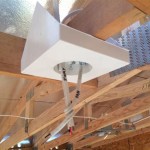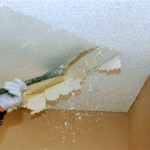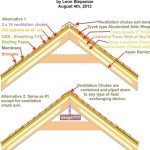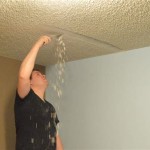Convert Flat Ceiling To Vaulted Before And After
When it comes to home improvement, one of the most impactful and transformative changes you can make is to convert a flat ceiling to a vaulted one. This architectural modification not only adds visual interest and spaciousness to a room, but it can also increase its value. If you're considering making this change to your home, it's important to understand the process involved, the benefits and drawbacks, and the potential costs.
Before You Begin
Before embarking on a vaulted ceiling conversion, there are a few things you need to consider:
- Structural Integrity: Ensure that your home's structure can support the weight of a vaulted ceiling. Hiring a structural engineer to assess your home's framing and foundation is recommended.
- Room Height: You will need sufficient ceiling height to create a vaulted ceiling without making the room feel cramped. A minimum of 9 feet is generally required.
- HVAC System: The conversion may require modifications to your HVAC system to accommodate the new ceiling height.
- Budget: Vaulted ceiling conversions can be expensive, so it's important to factor in the cost of materials, labor, and potential structural reinforcements.
The Conversion Process
The process of converting a flat ceiling to a vaulted one typically involves the following steps:
- Framing: New beams and trusses are installed to create the framework for the vaulted ceiling.
- Drywall: The new framework is covered with drywall to create the vaulted shape.
- Finishing: The drywall is then painted or textured to match the existing walls and ceiling.
- Electrical and HVAC: Any necessary electrical and HVAC modifications are made to accommodate the new ceiling height.
- Trim and Moldings: Trim and moldings are added to finish the look of the vaulted ceiling.
Benefits of Vaulted Ceilings
Converting a flat ceiling to a vaulted one offers several benefits, including:
- Increased Space and Light: Vaulted ceilings create a sense of spaciousness and allow for more natural light to enter the room.
- Architectural Interest: They add visual interest and character to a room, making it more inviting and appealing.
- Increased Home Value: Vaulted ceilings are a sought-after feature that can increase the value of a home.
Drawbacks of Vaulted Ceilings
While vaulted ceilings offer many benefits, there are also some potential drawbacks to consider:
- Cost: Converting a flat ceiling to a vaulted one can be a significant expense.
- Maintenance: Vaulted ceilings can be more challenging to clean and maintain than flat ceilings.
- Energy Efficiency: High vaulted ceilings can be more difficult to insulate, potentially leading to higher energy costs.
Before and After Comparison
To illustrate the dramatic transformation that a vaulted ceiling conversion can make, here is a before and after comparison:
Before: A room with a flat ceiling, making it feel cramped and confining.
After: The same room with a vaulted ceiling, creating a sense of spaciousness and architectural interest.
Conclusion
Converting a flat ceiling to a vaulted one is a major home improvement project that can have a significant impact on the look, feel, and value of a home. However, it's important to carefully consider the structural requirements, costs, and potential drawbacks before making a decision. If you're considering this type of conversion, be sure to consult with a qualified contractor to discuss your options and ensure a successful project.
Ep 6 Vaulting The Living Room Ceiling And Exposing Timber Beams

How To Convert Existing Truss Roof Flat Ceiling Vaulted Using Rafters Post And Beam

Converting A Flat Ceiling To Cathedral Pt 2 Youtube

Ideas For Converting Flat Ceiling Into Vaulted Home Remodeling Youtube

Converting A Flat Ceiling To Cathedral Pt 2 Youtube

Vaulted Ceiling To The Studs

Vaulted Ceiling To The Studs

How To Support A Cathedral Ceiling Or Vaulted Roof

Stunning Vaulted Ceiling Ideas For Any Style Of Home Homebuilding

How To Tear Down An Old Ceiling Young House Love
See Also


